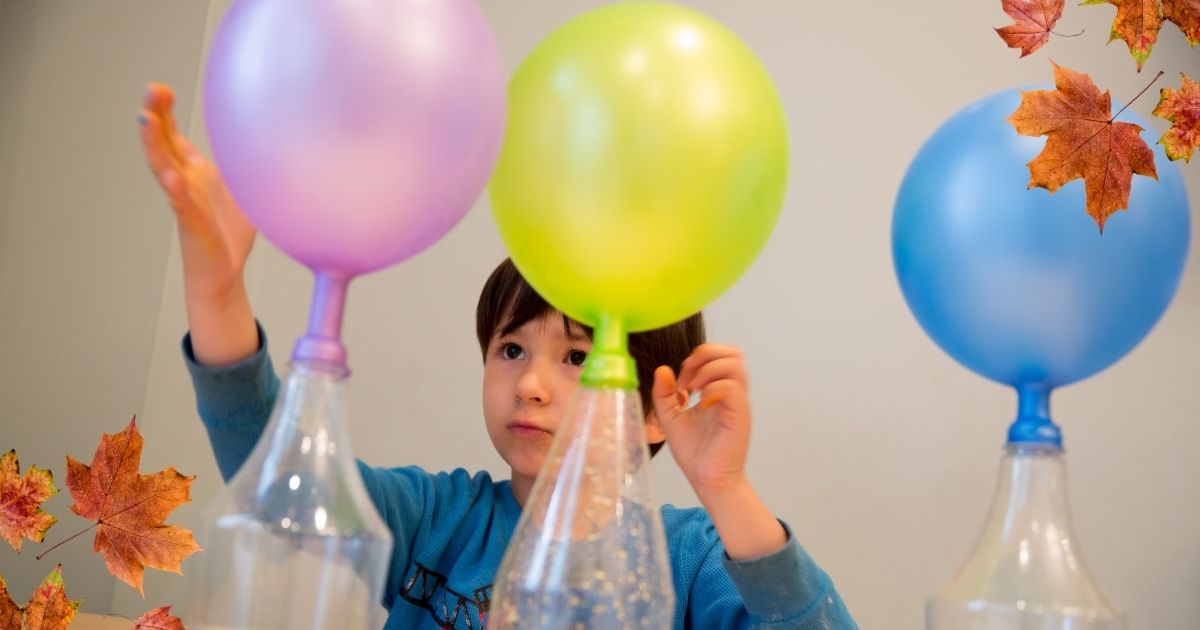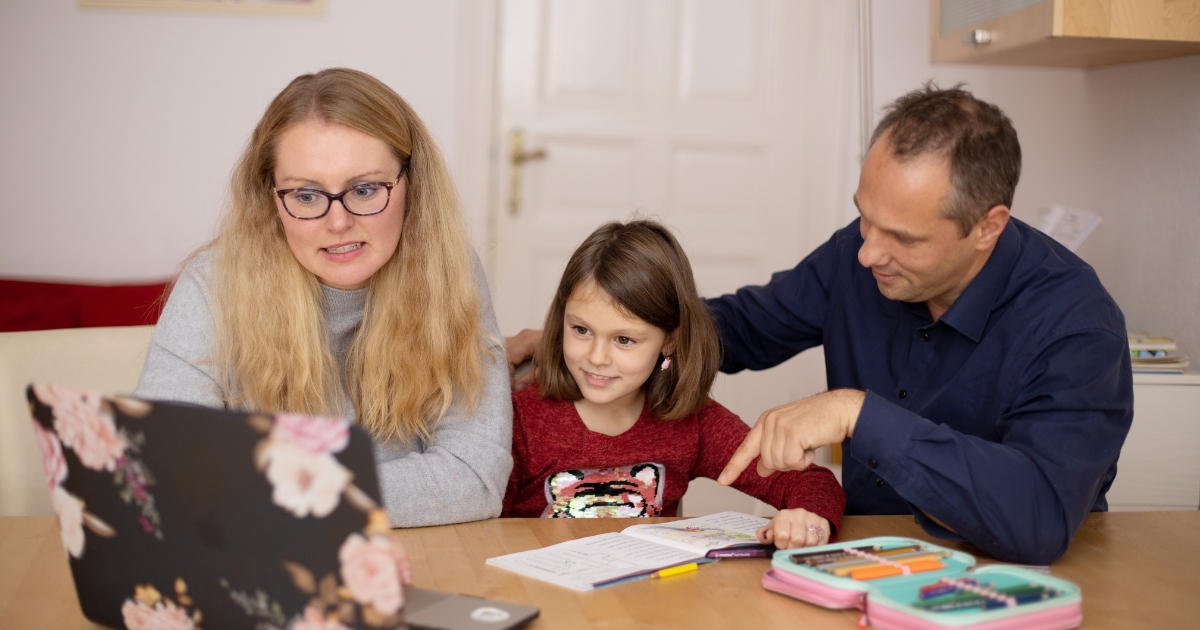When the weather turns gray and your plans for outdoor play get washed away, it’s time to turn your kitchen table into a mini science lab. Rainy days are perfect for hands-on learning, especially when your kids can mix, build, and discover all while staying warm and dry. That’s where rainy day science activities come to the rescue! These experiments are not only fun but educational — helping your homeschoolers explore STEM concepts in creative, fall-themed ways.
Below, you’ll find three engaging fall science projects for kids that are simple, affordable, and guaranteed to spark curiosity. No fancy lab coats required — just a sense of adventure (and maybe a towel for spills).
1. Leaf Chromatography: Discovering Hidden Colors
Fall is full of vibrant reds, oranges, and yellows — but have you ever shown your child where those colors come from? This classic homeschool science experiment reveals the hidden pigments inside leaves through a process called chromatography. It’s a fantastic way to tie science to the beauty of autumn.
What You’ll Need:
- A few freshly fallen leaves (different colors work best)
- Rubbing alcohol
- Coffee filters or paper towels
- Glass jars or cups
- A spoon or craft stick
- Tape
- A pencil
Steps:
- Tear up the leaves into small pieces and place each type in a separate glass jar.
- Pour in a bit of rubbing alcohol — just enough to cover the leaves.
- Mash the leaves using the back of a spoon or craft stick to help release their pigments.
- Cover the jar loosely with plastic wrap and place it in a warm spot (like near a sunny window) for about 30–60 minutes.
- Cut a strip of coffee filter and tape it to a pencil so that the strip just touches the liquid in the jar.
- Watch the magic happen! Over the next hour, the pigments will travel up the paper, separating into bands of different colors.
Science Behind It:
Leaves contain various pigments — chlorophyll (green), carotenoids (yellow/orange), and anthocyanins (red/purple). In summer, chlorophyll dominates, but in fall, as the plant prepares for winter, chlorophyll breaks down and the other pigments shine through. Chromatography shows these hidden colors in action.
Try This Twist:
Compare the results of leaves from different trees — or even evergreen needles. Ask your child to guess which pigments they’ll see before they begin. Turn it into a mini science fair presentation by recording observations in a notebook.
2. Build a Pumpkin Volcano (Yes, Really!)
What’s more fall-themed than pumpkins? This experiment adds some fizz and fun to your homeschool day by turning a small pumpkin into a bubbling volcano. It’s one of those rainy day science activities that looks messy but teaches valuable lessons about chemical reactions — and gives you an excuse to use that leftover pumpkin from Halloween decorating.
What You’ll Need:
- A small or medium pumpkin
- Baking soda
- Vinegar
- Dish soap
- Food coloring (optional, but highly recommended)
- A tray or large plate to catch the mess
Steps:
- Cut off the top of the pumpkin and scoop out the seeds (save them for roasting later!).
- Place the pumpkin on a tray to contain the eruption.
- Add baking soda inside — about 3–4 tablespoons.
- Squeeze in dish soap and a few drops of food coloring.
- Pour vinegar into the pumpkin and watch the eruption!
Science Behind It:
The fizzing and bubbling are the result of an acid-base reaction between vinegar (acid) and baking soda (base). When they combine, they create carbon dioxide gas — the bubbles you see “erupting.” The dish soap adds frothiness, creating that lava-like flow.
Learning Extensions:
- Measure the reaction: Try different amounts of baking soda or vinegar to see which combination gives the biggest eruption.
- Add math: Have your child measure ingredients and record how the reaction changes.
- Incorporate art: Afterward, use the pumpkin as a canvas — let your child paint or carve it with a “volcanic” design.
This is one of those perfect fall STEM projects for kids because it combines chemistry, art, and hands-on fun in one go.
3. Weather in a Jar: Make a Mini Water Cycle
Rainy days are a great time to talk about — well, rain! Teach your child how the water cycle works with this easy and visual experiment. They’ll create clouds, condensation, and even “rain” inside a jar.
What You’ll Need:
- A large glass jar
- Hot water
- Ice cubes
- A plate
- Food coloring (optional)
- Plastic wrap or lid
Steps:
- Pour hot water into the jar (about one-third full).
- Add a few drops of food coloring to make the water more visible.
- Cover the jar with a plate or plastic wrap.
- Place ice cubes on top of the lid.
- Watch what happens! In a few minutes, droplets will begin to form inside the jar and fall back into the water like rain.
Science Behind It:
This experiment demonstrates evaporation, condensation, and precipitation — the main parts of the water cycle. The hot water evaporates, the ice cools the vapor causing condensation, and the droplets that form eventually “rain” back down.
Discussion Prompts:
- Ask your child: Where else do we see evaporation in daily life?
- Have them draw and label the stages of the water cycle.
- Talk about why rain helps plants grow — and why too much rain can cause problems like floods.

Why Fall Science Projects Are Perfect for Homeschoolers
Autumn offers a unique mix of natural materials, changing weather, and cozy indoor time — all of which are great opportunities for hands-on STEM learning. The beauty of these experiments is that they don’t feel like “schoolwork.” Instead, they encourage creativity, observation, and curiosity — essential traits for young scientists.
When kids get to see and touch science, concepts that might seem abstract suddenly click. A rainy afternoon can transform into an unforgettable lesson about how nature works.
Here are a few more quick ideas to keep the curiosity flowing:
- Create a “leaf library” by collecting and identifying different leaves.
- Track the temperature over several days and make a graph.
- Make bird feeders from pinecones and peanut butter, then observe which birds visit.
These small projects build problem-solving skills and spark independent exploration — the kind of learning that sticks far beyond the lesson.
Tips for Making the Most of Rainy Day Science Activities
To make your homeschool science sessions smoother (and less messy), keep these practical tips in mind:
- Prepare a “science box.” Stock it with essentials like baking soda, vinegar, food coloring, droppers, plastic cups, and paper towels. Having supplies ready means you can jump into experiments anytime.
- Let your child lead. Ask them what they notice, what they predict, and how they think it works. Encourage open-ended thinking rather than just “right answers.”
- Document discoveries. Keep a science journal or photo log. Writing or drawing what they see helps reinforce learning.
- Use nature as your classroom. Even when it’s raining, you can observe clouds, puddles, and the smell of wet soil — all parts of the science of weather and ecosystems.
- Turn mistakes into learning. If something doesn’t work as expected, that’s part of the experiment! Talk about what could be changed next time.
Remember, the goal isn’t perfection — it’s exploration. Messy experiments often lead to the best “aha!” moments.
Keep the Learning Flowing — Even on Cloudy Days
A rainy day doesn’t have to dampen your homeschool spirit. With a few simple supplies and a sense of curiosity, your kids can explore chemistry, biology, and physics right from your kitchen table. Whether you’re uncovering the colors in leaves, erupting pumpkins, or making rain in a jar, these projects bring science to life in the most delightful way.
Homeschooling is about flexibility — using real-life moments (like rainy afternoons) as opportunities to learn together. So the next time storm clouds roll in, grab your “science box,” pour some cocoa, and let your little scientists get to work.
Keep Exploring with DKM Homeschool Resource
Looking for more creative homeschool ideas? Check out the latest posts on DKM Homeschool Resource for lesson plans, DIY projects, and educational tips tailored for hands-on learners. Whether you need more homeschool science experiments, creative writing prompts, or curriculum help, we’ve got you covered.
Make every season a learning season — rain or shine!




